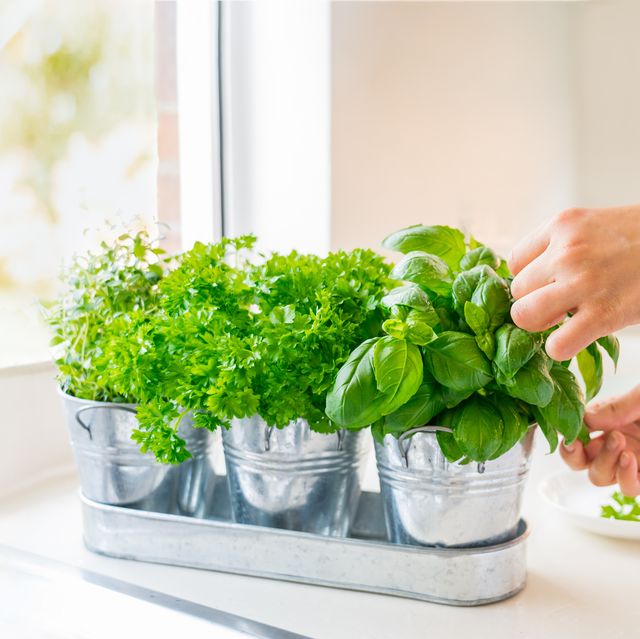In order to know more about herb gardens, it helps to have an understanding of what an herb is. There are many types of herbs and herb gardens, all having a number of different uses. Keep reading with Pritish Halder for more information on using herb gardens.
What is Herb?
Herbs are defined as plants that are useful to humans. Not quite the same as a vegetable or a fruit, an herb is something we value for a variety of different reasons. An herb can be useful to us for its flavor, its scent, its medicinal properties or its use as an insecticide. Some herbs are used as coloring for dyes or for industrial uses. Herbs have been used for thousands of years in teas and balms to relieve physical ailments, such as upset stomachs and stress-induced illness.

What is a Herb Garden?
An herb garden is basically a garden that is being used solely to grow herbs. A better description of what an herb garden might be is a beautiful and relaxing place where you can find plants that are not only useful but beneficial to the enjoyment of life. An herb garden can be any size or shape and can contain many different types of herbs or just a few. An herb garden may take up an entire yard or may simply be planted in a small window box container. Herb gardens can be kept indoors on a sunny windowsill or outdoors in the open breeze. An herb garden design can also be incorporated into a vegetable garden, with landscape shrubbery, or mixed in with your flowers.

Variety
Types of Herb Gardens There are many different types of herb gardens and many ways for using herb gardens, each with their own character and charisma.
Kitchen Herb Garden
A culinary, or kitchen, herb garden will consist of only herbs used for flavorings in cooking. Most are grown in containers, though they can be grown in the garden too, nearest the kitchen. It might contain:
- Parsley
- Basil
- Chives
- Oregano
- Rosemary
- Thyme
Fragrant herb garden

Lavender Lemon balm Scented geraniums Herbal Tea Garden An herbal tea garden will consist of herbs such as chamomile, anise, hyssop, and assorted mints that can be brewed into delicious teas.
Medicinal Herb Garden
A medicinal herb garden will consist of herbs used for soothing and comfort, where you might find aloe and feverfew. A word of caution on using herb gardens for medicinal purposes: while some herbs have been found to be helpful, other herbs can be harmful if ingested or used improperly. Always check with a doctor before starting any herbal remedy.
Ornamental Herb Garden
These herbs are prized for their beautiful flowers and unusual foliage. An ornamental herb garden might contain southernwood, sage, and germander. The most popular type of herb garden design consists of many different varieties of herbal plants, some for cooking, some for fragrance, some for beauty, and some for just soothing your soul.

Indoor or outdoor ?
Next, think about the space and location for growing your herbs. Will they be indoors or out in your garden? In the ground or pots? Will they have full sun or mostly shade? For herbs that are perennials, check out the USDA Plant Hardiness Zone Map to see if the plants you want to grow will be able to thrive where you are. Selecting herbs that fit the environment and physical space you have available for them will also help maximize your harvests while using your resources efficiently. Here are my top picks that maximize space-saving, cost-cutting, and cooking possibilities.

Of all the herbs listed here, rosemary is the one I would recommend planting outside in the ground if you have space. This hearty aromatic plant can grow into a full woody bush where it is hardy (Zones 8-10). Rosemary is very flavorful and comes in handy for quickly livening up potatoes or chicken. Most important, it is a snap to grow in most areas of the country. Just be aware that if you live in a colder region, the plant may not survive the winter unless you move it to a protected spot until spring.
 Basil
Basil
You can add a few leaves of fresh basil to just about any dish for a taste of Italy. While pesto maybe the first thing you think of to make, this herb works in everything from savory dishes to desserts and even drinks like a basil lemon drop cocktail. By having the plant ready and waiting, I can pick what I need when I need it. Basil is easy to grow in a sunny spot, indoors or out. It comes in dozens of varieties, from classic ‘Genovese’ basil to Thai basil, and from compact ‘Spicy Globe‘ to large-leafed ‘Italian Mammoth’.
/dill-tips-for-growing-and-using-1402606-12-57086d9f5f954424a31adbe37dbc8d7f.jpg) Dill
Dill
My new passion is pickling; I have been experimenting with cucumbers, carrots, even green beans. But the key to good pickled veggies is the herbs and spices you add to the pickling liquid, and a pickle’s best friend is dill. This beautiful and easy-to-grow plant will pep up your garden and your fermentation process. Dill is an annual, so you’ll need to replant it each spring; it does reseed itself easily if you let the flower heads fully develop.
 Mint
Mint
One of the most varied and versatile herbs to get to know is mint. I like to use mint in baked goods and to add a refreshing flavor to beverages from tea to cocktails like mojitos and juleps. There are all kinds of different varieties that you may never see at your local grocery store, such as apple mint, chocolate mint, ginger mint, and orange mint, which are especially fun to grow in your garden. This vigorous herb is very easy to grow, to the point where it can get out of control, so keep it confined to a container if you don’t want it taking over your yard.
 Catnip
Catnip
Although technically in the mint family, catnip is very different from culinary mint. And instead of using it in the kitchen, this herb is for your feline friends. Cats go bonkers over fresh leaves, or you can add dried leaves to homemade cat treats or stuff into a cat toy. If you regularly purchase catnip from pet stores, you’ll see a difference in your pocketbook right away by growing your own, and your cats will be on cloud nine. You can grow this perennial herb indoors or outside, but just like its mint cousins, catnip can get overly rambunctious so it’s best to keep it in a pot.

Have fun creating your herb garden, and just remember they will pay for themselves in no time at all. They’ll brighten up your kitchen or patio with vivid colors and fantastic aromas. Plus, you’ll have a plentiful supply always at the ready to play around with, from using them in baking to spicing up your favorite beverage.
Reference
https://www.gardeningknowhow.com/edible/herbs/hgen/learn-more-about-herb-gardens.htm
https://www.bhg.com/gardening/vegetable/herb-garden-cooking-cut-costs/












I agree with your point of view, your article has given me a lot of help and benefited me a lot. Thanks. Hope you continue to write such excellent articles.
Reading your article has greatly helped me, and I agree with you. But I still have some questions. Can you help me? I will pay attention to your answer. thank you.
Very nice post. I just stumbled upon your blog and wanted to say that I’ve really enjoyed browsing your blog posts. In any case I’ll be subscribing to your feed and I hope you write again soon!
This article opened my eyes, I can feel your mood, your thoughts, it seems very wonderful. I hope to see more articles like this. thanks for sharing.